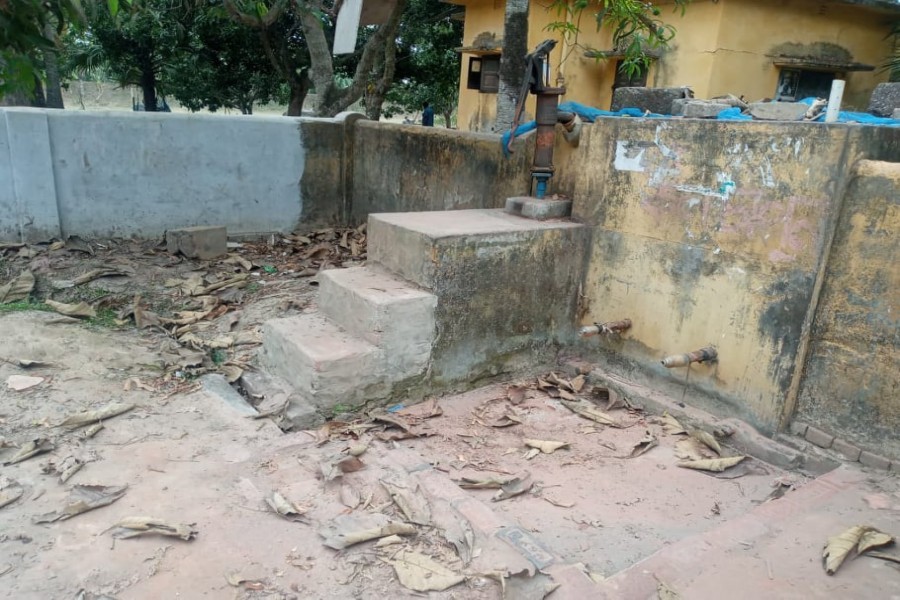Spending childhood in Khulna and Satkhira in the 1980s, this scribe saw no water crisis then. The tubewells were enough to meet the family needs of water. In the next decade, it was heard, people couldn’t use the tubewell water because of arsenic contamination.
Visiting our village in Satkhira, some people from the Department of Public Health Engineering marked all the tubewells with green or red colours. We were instructed not to drink water or use it for cooking from a red-coloured tubewell. Nevertheless, we had alternatives – almost every family had our own pond. The pond’s water was used for cooking, washing and bathing. Those ponds were a source of traditional fish nutrients.
Gradually, we witnessed, those ponds were being filled and buildings rose there. People eventually became entirely dependent on the tubewells. And within a few years, people began to feel that drinking water is becoming salty.
Today, living in Satkhira, our parents have to spend Tk 1000-1500 on average a month to buy around 300 litres of drinking water for four persons. Though we have a tubewell in our house, we cannot get enough water, especially during the summer when groundwater goes down and becomes much salty.
There are some deep tube wells in the village, but those are far from the house. So, the temporary solution is to buy water despite skepticism about quality.
A change that has taken place in the meantime is massive increase in shrimp cultivation, which requires use of salt. Simultaneously, community people started using shallow pumps for irrigation and that is one of key reasons why the groundwater is going down in the region. And of course, the climate change has played its part in causing deterioration in the situation – raising salinity of water in the coastal belt.
A major headache now is the saltwater invasion in the coastal areas that has rendered many shallow wells unusable. As sea-level rising continues, both ground and surface water are feared to become saltier in the coming days.
After arsenic has made most of the drinking water sources unusable, salt puts the last pin into the coffin.
To solve this problem, some rich people installed deep tubewells on their grounds. A majority of the community, especially those who cannot afford to buy water, go there and collect drinking water from those tubewells. This not only causes transportation sufferings but also soaks up a big part of the people’s time to work.
The problem is even more complex as those deep tubewells are not officially checked. With no alternative out there, the poor are using those water. And out of arsenic fear, they tend to drink as little water as they can. Such practice, as experience shows, is causing various skin and stomach diseases.
The total amount of salinity-affected land in Bangladesh was 83.3 million hectares in 1973, which had risen up to 102 million hectares by 2000 and 105.6 million hectares by 2009. The number continues to rise. In the past 35 years, salinity increased around 26 per cent in the country, spreading into non-coastal areas as well. That is hampering people’s livelihoods and our local ecology.
Thousands of people are leaving those vulnerable areas in the coastal region and migrating elsewhere. This is not a permanent solution either. It’s time to take this issue seriously in the first place before the crisis reaches a point of no return.
Shabira Nupur is a policy advocacy expert.


